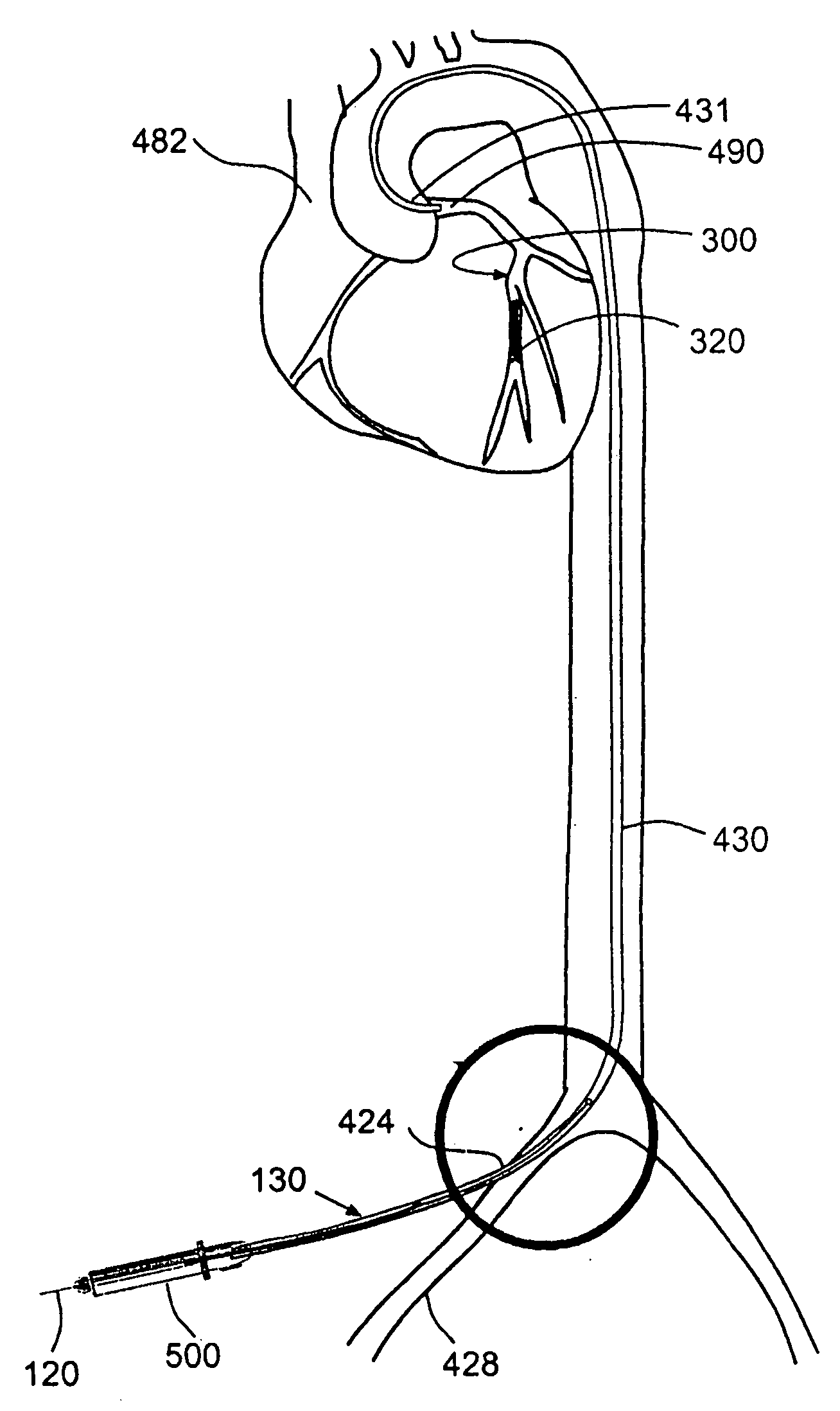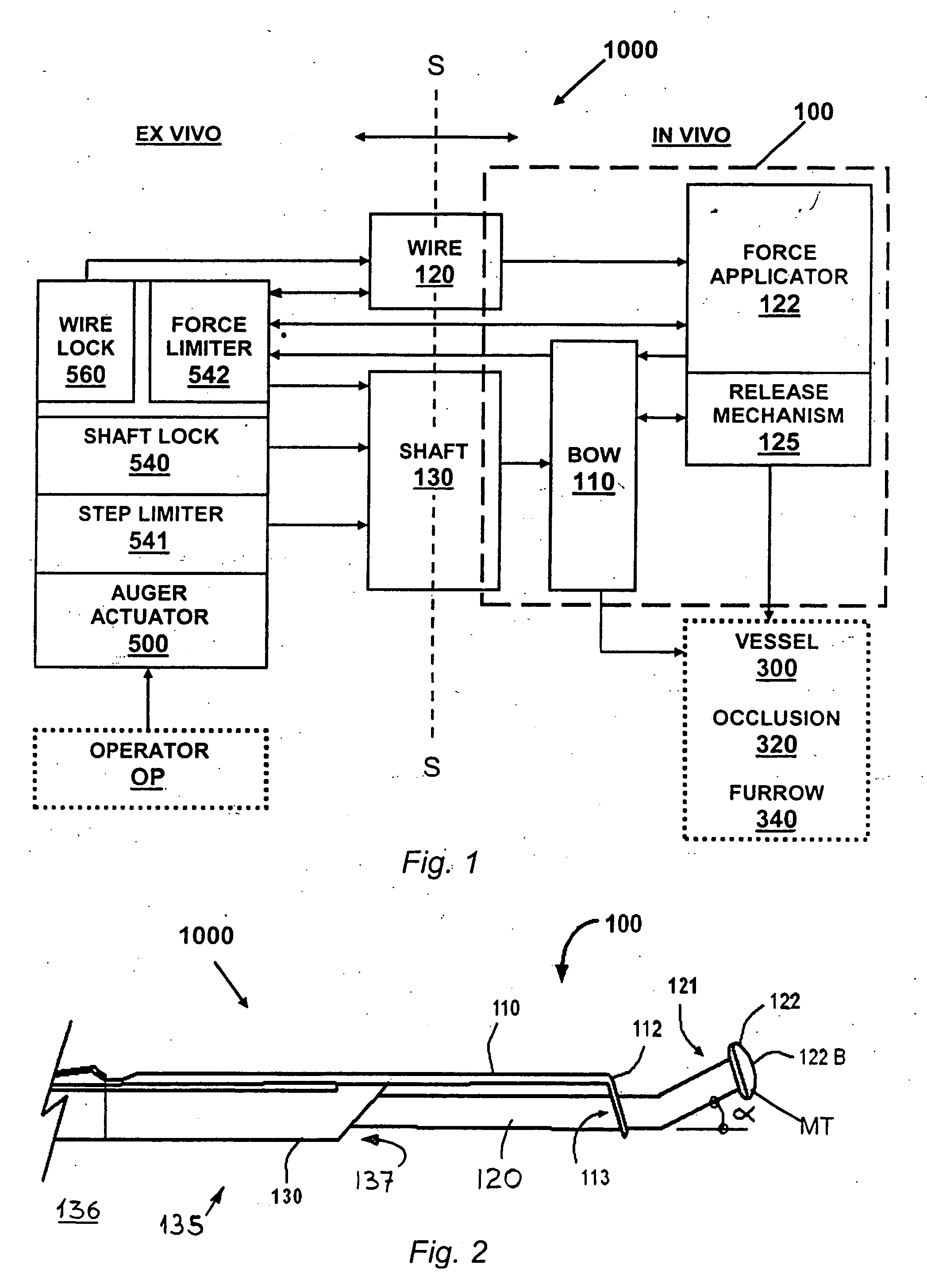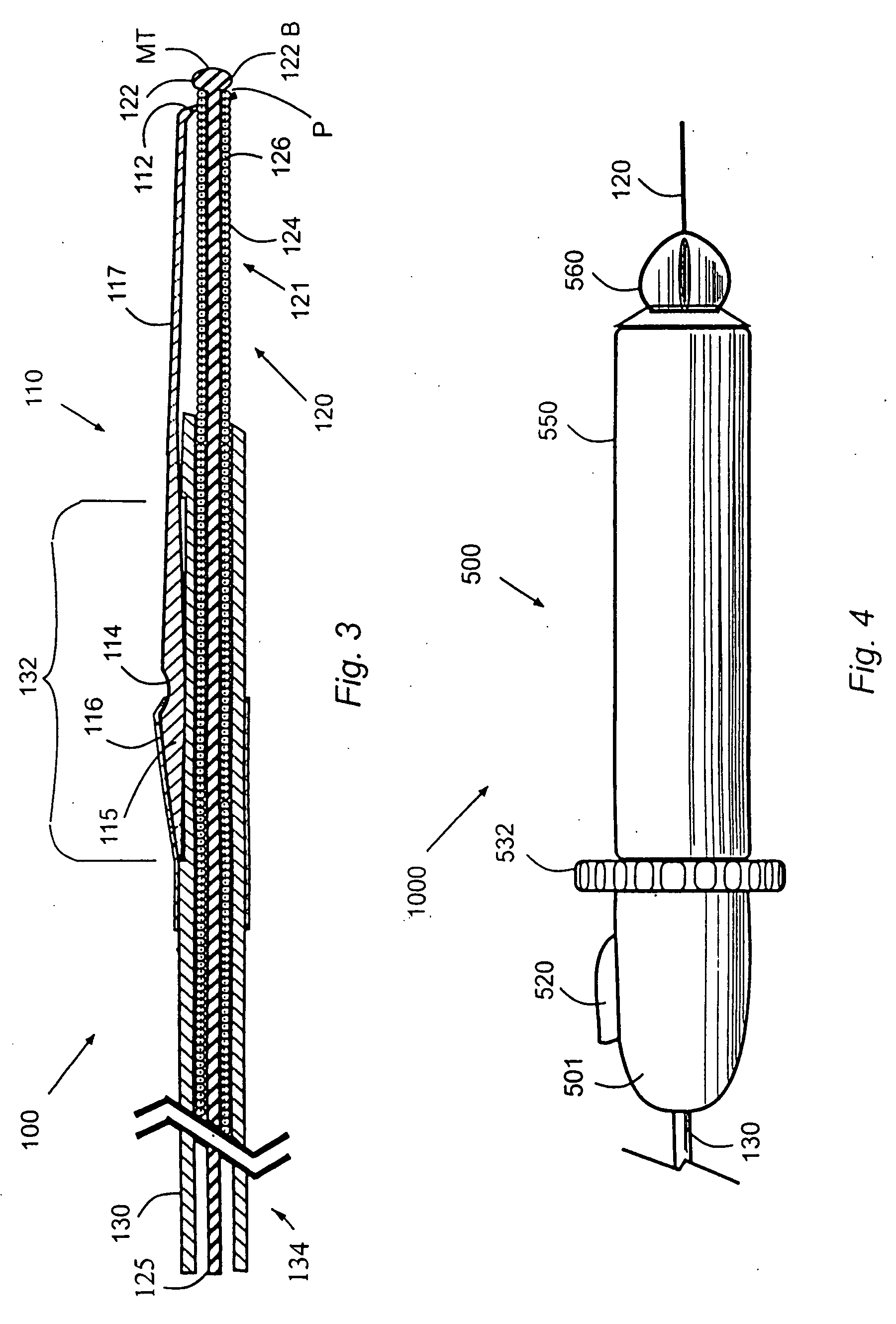Blood vessel occlusion auger
a technology auger, which is applied in the field of blood vessel occlusion auger, can solve the problems of high morbidity and death risk, slow blood flow, and the inability of a guide wire to navigate through and distally past the occlusion, so as to reduce the spring rate coefficient of deflection, prevent the passage of the force applicator, and improve the effect of reducing the dimension
- Summary
- Abstract
- Description
- Claims
- Application Information
AI Technical Summary
Benefits of technology
Problems solved by technology
Method used
Image
Examples
embodiment 1000
[0078] An operator OP handles the occlusion auger 1000 via an ex vivo auger actuator 500, which controls an in vivo auger tool 100 operating a distal portion of the wire 120 and of the shaft 130. In the preferred embodiment 1000, the auger tool 100 has for example, a flexible and resilient element, such as a bow 110, fixedly coupled to the distal portion of the shaft 130, and removably engaging an in vivo force applicator 122 fixed to the in vivo distal extremity of the wire 120.
[0079] In operation, the wire 120 is first navigated distally via blood vessels 300, inside vessel walls 310, until the force applicator 122 engages an occlusion 320, or a furrow 340 in an occlusion 320. Then, the shaft 130 and the force applicator 122 are coupled and operated to flex and arcuate the bow 110. Thereby, the force applicator 122 and the extrados of the arcuate flexed bow back 117 are embeded in occlusion tissue lining the furrow 340, in releasable anchoring disposed adjacent opposite vessel wal...
embodiment 200
[0181]FIGS. 23A to 23C illustrate a distal portion of the auger tool, as embodiment 200, with a different type of force applicator 122 and face 112, and with reduced dimensions. In FIGS. 23A to 23C reference is made to the planar face 112, but the same applies to the twisted face 112T, with and without one or more cutting-edge(s) 112C.
[0182] As shown in FIG. 23A, the force applicator 122 is configured as a limited length of male screwthread 122M disposed at the distal extremity of the wire 120, instead of the bulb 122B shown in FIGS. 2 and 3. The face 112, shown in FIG. 23B, operates as a female screwthread 113F, or may be fitted therewith, in replacement of the cylindrical face bore 113, to receive the male screwthread 122M therein in matching and in extension therethrough.
[0183] To extend the male screwthread 122M distally outward of the face 112, as shown in FIG. 23C, the male screwthread 122M is rotated and threadingly engaged until distally emerging thereout. Thereafter, once ...
PUM
 Login to View More
Login to View More Abstract
Description
Claims
Application Information
 Login to View More
Login to View More - R&D
- Intellectual Property
- Life Sciences
- Materials
- Tech Scout
- Unparalleled Data Quality
- Higher Quality Content
- 60% Fewer Hallucinations
Browse by: Latest US Patents, China's latest patents, Technical Efficacy Thesaurus, Application Domain, Technology Topic, Popular Technical Reports.
© 2025 PatSnap. All rights reserved.Legal|Privacy policy|Modern Slavery Act Transparency Statement|Sitemap|About US| Contact US: help@patsnap.com



